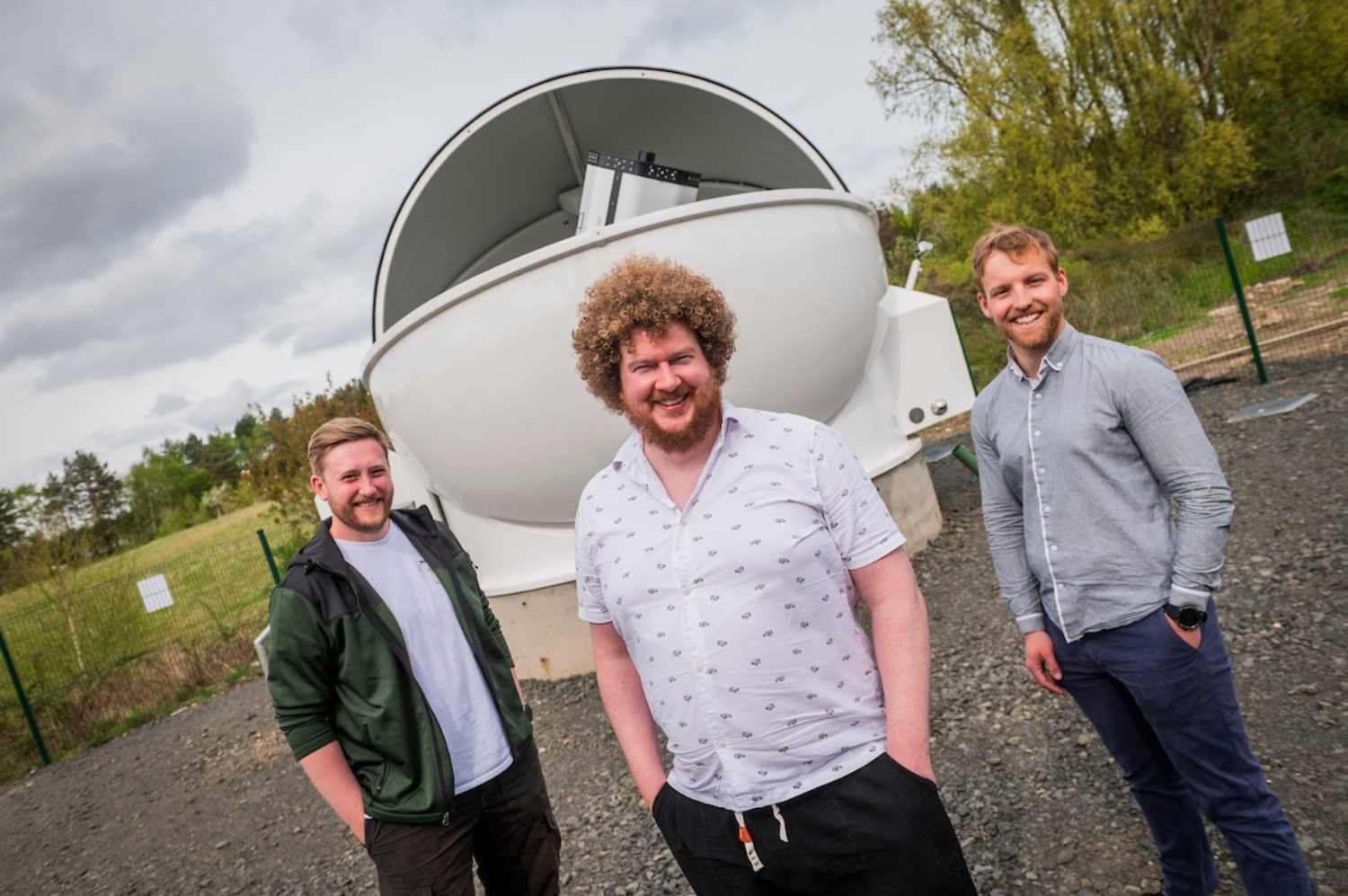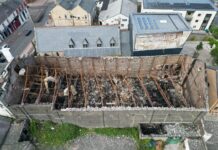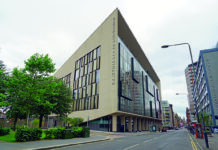
DATA breaches could become a thing of the past thanks to the opening of the new £2.5 million Quantum Communications Hub Optical Ground Station (HOGS) at Heriot-Watt University‘s Research Park in Edinburgh.
The build facility was led by Edinburgh-based EC Specialist Contractors, with Harley Haddow and ECD Architects behind the design. HOGS uses advanced laser technology to communicate with satellites in ways that the university said could make data breaches a thing of the past.
Unlike standalone facilities, the new optical ground station is said to be a ‘first of its kind’ in the UK and has been integrated into Heriot-Watt University’s dark optical-fibre network, creating a living laboratory where scientists and visiting industry users can simulate everything from urban networks to intercontinental communications. It ensures new technologies can be tested in a controlled environment before real-world deployment, significantly reducing development time and cost.
HOGS will directly contribute to more secure everyday transactions ranging from online banking to health data protection, with the potential to create networks that cannot be hacked.
The facility will shortly add single-photon detectors and adaptive optics systems capable of exchanging quantum-encrypted information with orbiting satellites. This technology could eventually form the backbone of an ‘ultra-secure’ quantum internet within the UK, the learning institute added.
Beyond its cybersecurity focus, the facility will monitor and track space debris which is a growing concern as Earth’s orbit becomes increasingly congested. The facility will also pioneer new techniques in high-speed optical communications that could power future 6G networks and beyond.
Dr Ross Donaldson, project lead from Heriot-Watt University’s institute of photonics and quantum sciences, said, “This facility represents a quantum leap for UK communications security. With cyber threats evolving daily, we urgently need to create networks that are secured by the laws of physics, not by encryption that could be broken by future technologies.
“HOGS allows us to research a technique called quantum key distribution between space and the ground, and vice versa. This is about creating encryption keys that cannot be intercepted or hacked without detection.
“For businesses handling sensitive data, the protocols we’re developing here could revolutionise how they protect customer information and intellectual property. Our work directly addresses the estimated £27 billion annual cost of cybercrime to UK businesses and therefore benefits everyone.
“Our northern latitude gives us a unique advantage for tracking satellites and debris in polar orbits because we can observe objects for longer periods than stations located closer to the equator, potentially identifying smaller debris fragments that currently go undetected but pose serious collision risks to operational satellites.”
The facility features a 4.5m-diameter observatory dome housing a 70cm telescope equipped with advanced tracking systems and environmental monitoring tools. A secondary 40cm telescope with visible and infrared cameras provides additional capabilities for space imaging and debris monitoring.
Professor Gillian Murray, deputy principal of business and enterprise at Heriot-Watt University, added, “This facility isn’t just an academic research tool, it’s an economic catalyst. Scotland’s space industry already supports 8,000 jobs and generates £880 million annually, but with infrastructure like HOGS, we’re creating the environment for this to significantly grow. For Scottish and UK businesses working in the space sector, HOGS offers access to world-class testing facilities without the multi-million-pound infrastructure investment. Companies developing everything from sensitive cameras to optical transceivers can validate their technologies here before taking them to market.
“We’re creating a vibrant space technology cluster at our Research Park which is already home to specialists like Celestia UK. We’re integrating academia and industry through a co-location model that will accelerate innovation, particularly in sectors like financial services, healthcare and critical infrastructure that will benefit most from quantum-secure communications.
“Beyond the immediate economic impact, we’re building a skills pipeline that will produce the space workforce of tomorrow. Students from undergraduate to PhD level will gain hands-on experience with technology that doesn’t exist anywhere else in Scotland, while our outreach programme will spark interest in STEM subjects among local schoolchildren.”
The facility was built as part of the quantum communications hub project, funded through the UK national quantum technologies programme via the Engineering and Physical Sciences Research Council; it is part of a collaborative effort which also involves the Universities of Bristol, Strathclyde, and York, with space engineering expertise provided by the Science and Technology Facilities Council’s RAL Space. The future remit of the facility is linked to the new Integrated Quantum Networks Hub, which is led by Heriot-Watt University.
Professor Tim Spiller, director of the Quantum Communications Hub, said, “Quantum secure communications will still protect data – for governments, businesses and individuals – in a future, fully quantum-enabled, world. We know already that such communications work with optical fibres, but clearly to address data security on a global scale we must add satellite capability. The experiments to be undertaken with HOGS represent a key next step to establishing this capability.”
Professor Gerald Buller, director of the Integrated Quantum Networks Hub, added, “HOGS helps the UK to remain at the very forefront of quantum networking. Its location at Heriot-Watt, with direct fibre-optic links to our world-class quantum laboratories, will enable a range of ground-breaking experiments and quantum communications demonstrations, which were not previously possible. This will help to really accelerate progress towards establishing the global quantum networks of the future.”
Project Scotland spoke to Dr Ross Donaldson last year on the collaborative construction approach taken on the build of the Quantum Communications Hub. Click here to read the article.











